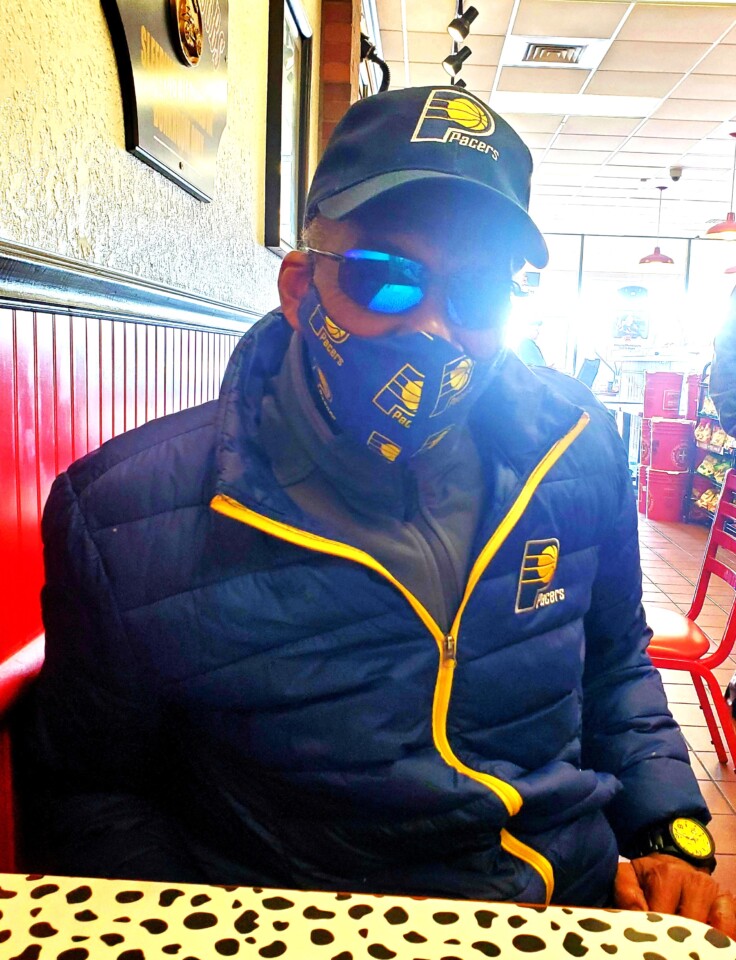
People remember the iconic afro most of all, the sculptured mound of hair that topped off his 6-foot-9 frame and made him look like a 7-footer. They remember the dunks, too, because his vertical jump was extraordinary for someone so tall. The sight of him sprinting down the court with his hair blown back by the breeze and executing an acrobatic breakaway dunk lives in the memory of veteran Pacers fans.
What people should remember most about Darnell Hillman, though, is the discipline. The team-first approach. The charisma. And, certainly, the significant contributions to six Pacers teams.
“Darnell was special guy to have on your team,” said Slick Leonard, who coached each of those six. “He had a great attitude.”
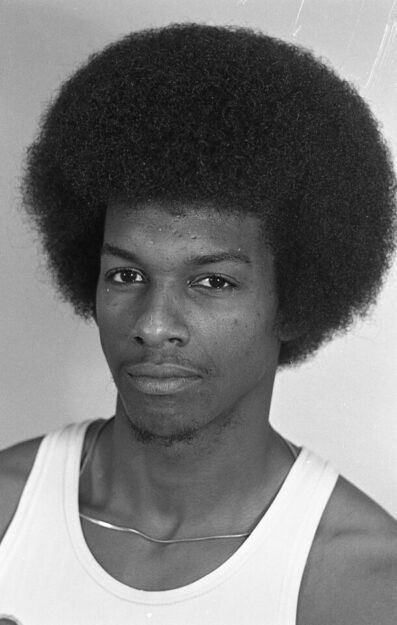
The Pacers teams for which Hillman performed include the 1972 and ’73 ABA champions as well as the four that followed, the last of which marked their entry into the NBA. But he played for several more front office teams as well, all the way from Dec. 3, 1999, his first day in the community relations department, until August of 2020 when he retired about a month shy of his 71st birthday.
Retired from what exactly is complicated, because his role didn’t fit conventional corporate classification. His last official job title was “Associate Director of Camps, Clinics and Alumni Relations.” But he was more than that. In fact, the title under his photo in the most recent media guide took a shot at encompassing everything by identifying him as “Associate Director, Community Ambassador.”
Call him whatever you want, Hillman was a grinder in a non-glamorous front office role, just as he had been as a player. He might have seemed flamboyant with the well-groomed Afro he says extended 13 ½ inches from his skull and all those hang-time dunks, but his game was blue collar. A power forward who could fill in at center, his primary assets were rebounding and blocking shots. He averaged 10.6 points and 8.4 rebounds over his six seasons with the Pacers, peaking at 13.9 and 9.2 in the 1974-75 season when a rebuilt team made a surprising run to the ABA finals.
Hillman started 244 of the 395 regular season games he played for the Pacers and 29 of the 72 playoff games. He never made an all-star team, and his best-remembered individual feat is winning the first NBA slam dunk contest, sponsored by the CBS television network, in 1977. But he helped teams win games. Helped them win championships, too.
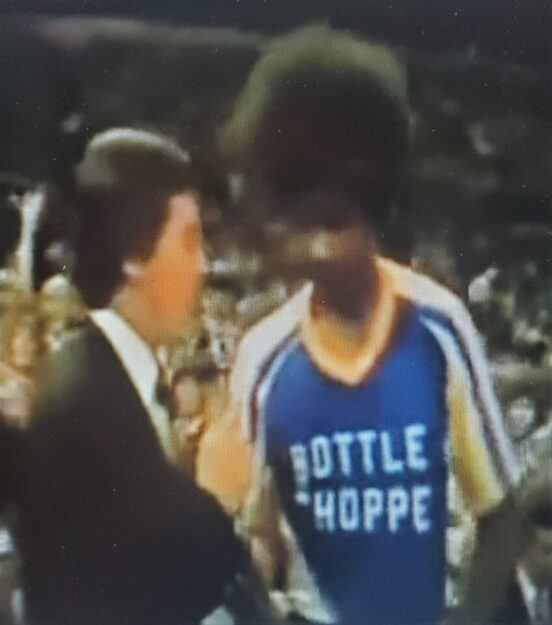
Hillman was selected by the Pacers as part of a preliminary three-round draft conducted before the ABA’s all-star game in January of 1971. The choices were supposed to be kept secret to give ABA teams first crack at negotiating with players before the NBA could get around to its draft, but the names leaked out immediately. Hillman was a second-round pick and described in Indianapolis newspaper articles as a “sleeper” and an “unknown” because he had spent the previous two years in the Army.
He turned out to be one of the savvier selections in franchise history. The Golden State Warriors took him with the eighth overall pick in the NBA draft and were under great pressure to sign the San Francisco native who had attended San Jose State for two years before being drafted into the Army. The Pacers, however, won the bidding war.
Hillman, along with fellow rookie George McGinnis, joined a stacked team that had won the ABA title in 1970 and finished with the league’s best record in ’71. His Army background turned out to be a major asset, as his confident but ego-free approach meshed well with his teammates and his work ethic and respect for authority impressed his coach.
“He was flashy, and he could jump, but he played the game with a lot of discipline because he knew what his shortcomings were,” said Billy Keller, who played on all three ABA championship teams. “That makes you a much more able contributor.”
Hillman contributed plenty, regardless of how he was used. While his season averages never stood out, he usually answered when opportunity knocked.
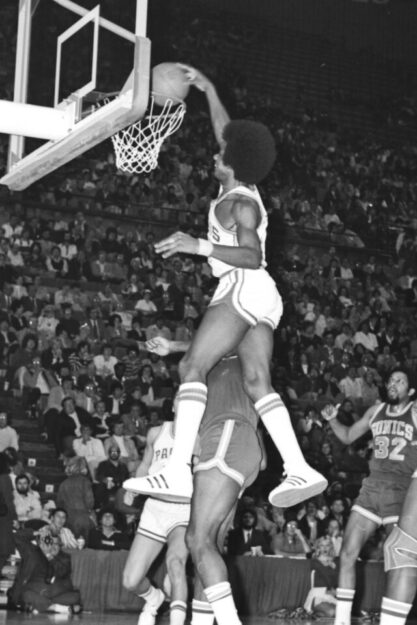
As a rookie, he had 10 points, 18 rebounds and 10 blocked shots off the bench in a victory over Florida. According to the story in The Indianapolis Star (headlined “Darnell a Daring Darling as Pacers Win”), he also forced several misses by intimidating shooters.
He had 20 points and 21 rebounds against Pittsburgh later that season and had two double-doubles in the second-round playoff series with Utah.
He had a career-high 24 rebounds along with 18 points against San Diego in the 1972-73 season and came up big several times in the playoffs as a starter when Roger Brown was limited by a sore back. He had 13 points and 19 rebounds in a Game 5 victory over Utah in the second round and 17 points and 18 rebounds in a Game 4 win over Kentucky in the championship series.
After the Pacers failed to clinch the championship at home in Game 6, Leonard told reporters he planned to return Brown to the starting lineup in Game 7 in Louisville to add more scoring punch. Brown, however, showed up late for the game after driving himself to Freedom Hall from Indianapolis, so Hillman got a last-minute reprieve as a starter. He played 44 minutes and grabbed 13 rebounds, both team highs, in the Pacers’ 88-81 victory.
“He was always ready when he was called upon,” Keller said.
In his later seasons with the Pacers, when the team was in rebuilding mode, Hillman stepped up his scoring. His career high of 35 points came against Denver in the 1975-76 season. He also had 16 rebounds that night. He had scored 32 in a game at Utah earlier that season.
Hillman and Keller were a lot alike, both in their whatever-you-need roles with the Pacers . They were the two players of that era most eager to connect with fans at scheduled events and were certainly two of the Pacers’ most popular players – Keller because he was an Indianapolis native and short (5-foot-10) and Hillman because of his dunking ability and world-class Afro. Their personalities were factors as well.
“Darnell and I would show up early for things and a lot of times be the last to leave,” Keller said. “Just being friendly, wanting to stay and visit … fans appreciate stuff like that. Once they got attracted to him for whatever reason, his personality took over. Darnell could relate to everybody.”
That made him a natural for his job in the front office. Many NBA teams hire former players to serve in a community relations capacity, mostly just to make appearances and sign autographs. Hillman’s involvement went far deeper than that. He directed youth camps and clinics, participated in reading programs and represented the franchise at golf outings throughout the summer.
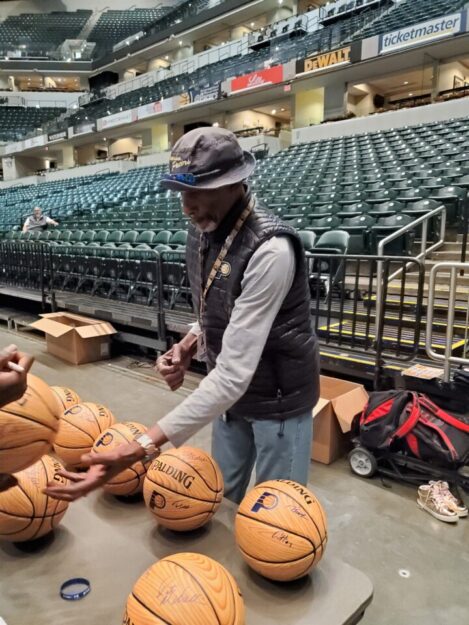
Hillman reached out to the public at games, too. He was aware that escalating ticket prices had sent the “average fans” to the upper levels of the fieldhouse and made it a point to mix with them.
He was an absolute superstar with kids, though, especially at camps and clinics https://www.youtube.com/watch?v=CVAXyqKqyvw. His Army discipline got their attention and his natural charm won them over.
“We always said he ran it like a boot camp,” said Kelli Towles, the Pacers’ Senior Director of Community Relations. “Darnell was very old school. He made them tuck in their shirts and they could not put their hands in their pockets. If they did, he made them turn their pockets inside out. He said, ‘There’s no walking in my gym.’ If they had to get a drink they had to run there and run back.
“Initially kids were afraid, but by the end of the camp they loved him. They realized he was doing it for a purpose, and they could laugh and joke with him. And the parents were appreciative of the way he approached the discipline. I can’t count the number of times I saw him pull a player aside who maybe was acting up and he would say, ‘I see potential in you!’ He would help them make a change in their mindset and by the end of the camp they were behaving much better. He really had a gift for dealing with kids.”
It wasn’t all about basketball, though. Sometimes it was just fun and games. How many slam-dunk champions do you know who would lay on the court and play Cookie Monster with the kids? https://www.youtube.com/watch?v=4TOTpt3U3i0
For that matter, how many do you know who would go to this much trouble:
In 2016, a young Pacers fan named Evan Leisure was to undergo heart surgery at Riley Hospital. A request was e-mailed to Hillman, asking if any of the players could drop by for a visit. The team was out of town around the time of the surgery, so Hillman put a gift package together and personally delivered it to Leisure.
Hillman’s job evolved into an additional role as the Pacers’ alumni director, dedicated to maintaining relations with former players and/or their spouses. He was the contact for those wanting tickets to a game, the one to organize appearances for them, the one to drop by and say hello at a game to the daughter of a former player, even if that player had been with the Pacers only briefly 50 years earlier.
“He was always that middle guy,” Keller said. “Anytime I needed something Pacer-related I called Darnell. I would imagine 99.9 percent of the guys did the same thing. And he was always very cooperative in getting your request filled. I’m not sure there was ever a time I requested something of him that he didn’t produce for me. He was reliable, and if he couldn’t do it he’d tell you up front.
“He really looked out for we ABA guys.”
Hillman was his own transportation committee, too. Before every home game the past few seasons, Hillman met Leonard in the underground parking garage at Bankers Life Fieldhouse in a golf cart and drove him and his wife, Nancy, to the radio broadcasting porch with an assist from an express elevator. Hillman returned in the cart near the end of the third quarter to take them back to their car.
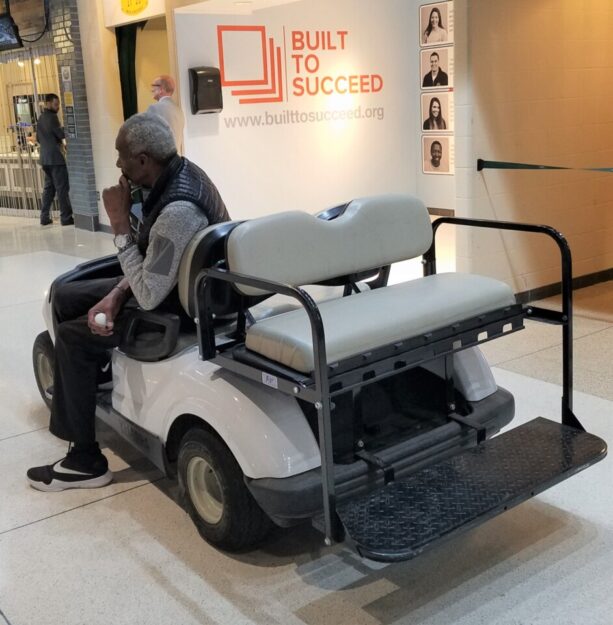
Hillman interacted with fans in the concourse while he waited. He was an attraction of his own for older fans who witnessed his career. If they asked if he can still dunk, he might say, “Too much snow on the mountain,” referring to his age-revealing gray hair. If someone had a child who was too shy to talk, he would have a small gift handy, such as a ball that lights up when bounced. But he demanded something in return:
“You’ve got to give me a fist bump!”
Hillman was equally at ease engaging with the military members who were honored at games. As an Army veteran, he could relate.
When you get right down to it, he’s the most versatile player the Pacers have ever had if off-court activities are included in the assessment. Replacing him required several alterations in the front office because of all the suits Hillman wore.
Hillman’s retirement party was relatively subdued, thanks to the pandemic. It started with a small gathering of fellow employees on the outdoor deck at Rick’s Boatyard at the Eagle Creek reservoir, a half-dozen or so, and gradually grew to about 18 as word got out among employees. Distancing concerns ran out the clock, but speeches were made and a retirement gift – a new set of golf clubs - was delivered.
A telling moment arrived when Karen Atkeson, the Vice-President of Player Relations, asked Hillman to step out to the parking lot. Coach Nate McMillan was waiting there to offer his congratulations, having taken the trouble to drive from downtown following practice before heading for the airport for the team's flight to Orlando for the bubble playoffs. Hillman technically wasn’t part of the basketball staff but had generated that kind of respect.
It would have been a much larger celebration under normal circumstances, but perhaps it was more appropriate that Hillman go out in a subdued fashion. He had come came to the Pacers as a “sleeper,” unknown to fans in Indiana, and he had played in the shadows of all-stars and future hall of famers.
But he left with the ultimate distinction: great teammate.
Tagged with: Billy Keller, Darnell Hillman, Slick Leonard
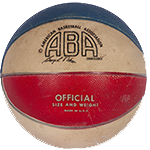 American Basketball Association
American Basketball Association Pacers
Pacers